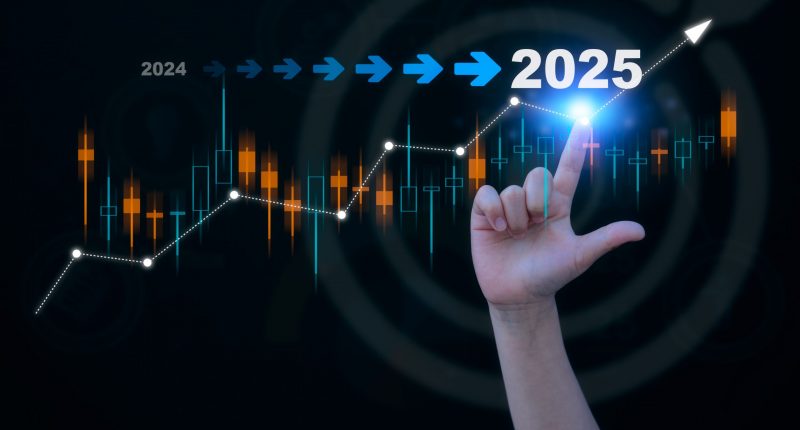How would you sum up FY24 from an investment perspective?
Cerutty Macro Fund’s Chris Judd: FY24 was a challenging market where listed companies faced little margin for error. We’ve observed a divergence between companies large enough to attract institutional capital and those that are not. Interest rates and cost of living pressures have significantly affected the Australian retail investor, causing listed companies that rely on retail investor flows to struggle to gain traction. Larger cap and mid-cap companies have been rewarded with price appreciation if they’ve performed well operationally, while those whose operations have underperformed have been severely punished by the market.
Wealth Within’s Filip Tortevski: FY24 was very promising. The market broke through 4 years of sideways action in February this year. January to March saw a stellar run upward, creating a lot of good trading opportunities. The market has settled down over the last couple of months but it is holding above the previous all time high (January 2022) which to me is still a very bullish sign. Many stocks have had great runs in FY24, especially in the financials sector, setting the intention for the next couple of years.
Saxo Australia’s David Harvie: It’s been quite a ride, and in many ways it all feels like an echo from 2021, as many of the same dynamics are underpinning the markets: simple extrapolation of recent growth; a belief that technology growth has no limits; speculation in crypto and meme stocks; strong buy-the-dip patterns; extreme index concentration (the 10 largest stocks are now 35% of the S&P 500 Index); and, strong momentum in a narrow group of the market.
What will be important for investors to think about for FY25?
Cerutty Macro Fund’s Chris Judd: We believe this dynamic will likely persist until interest rates cuts begin and retail investors receive some cost-of-living relief. However, the most recent Australian inflation data indicates that rate cuts are still quite a while away. With net migration continuing at high levels, coupled with tax cuts, it’s difficult to see how sticky inflation numbers won’t remain persistent.
Wealth Within’s Filip Tortevski: The US election in November will be an important event on the calendar. Volatile market reactions are common around these times, especially if the market is surprised by the decision. Locally, the forecast decision to drop interest rates in FY25 will also be a major story and will impact the market depending on what occurs. Also keep a close eye on the energy and materials sectors. Both have been lagging this year but are historically the best performers at this stage of the cycle. When they get going it could be explosive.
Saxo Australia’s David Harvie: It could be said that markets are heading towards valuations that may give investors cause to look for the next layer of opportunities, and not just run with the herd. For example, Saxo is currently neutral on US equity markets and underweight emerging equity markets, but overweight on European equities, with the ECB moving to rate cuts. At the same time, when we look back 10 years from now, it will be clear that the electrification of our economy was a profound game changer. It has transformative implications for energy markets, geopolitics, and industrial production.
Therefore it could be the case that simply investing in an index, or in a basket of stocks in a given theme, is not most prudent. Perhaps investors need to dig a little more to find value and stocks with return profiles, outside of the concentrated markets we find ourselves in presently.
What trends or sectors do you expect will dominate FY25?
Cerutty Macro Fund’s Chris Judd: Some of the themes we favour include strong migration into Australia, which is likely to support expenditure on essential goods and services domestically. Committed data centre capital expenditure is substantial, with underinvestment in new oil production and US shale oil production rates declining, the US is shifting from an economy dominated by monetary policy to one where fiscal policy is more important.
Wealth Within’s Filip Tortevski: Financials and tech are no brainers at the minute and the way they are moving I think they have further to go. They look promising for FY25 but as I said above, watch Energy and Materials also.
Saxo Australia’s David Harvie: We continue to remain positive on the Energy sector given attractive valuations, Healthcare – with the highest estimated forward growth on obesity and oncology, Financials given attractive net interest margin and pickup in loan growth, and other themes such as national security around defence and cybersecurity.
How do you expect the US election outcome will impact our market?
Cerutty Macro Fund’s Chris Judd: We believe that regardless of who wins the next US election, the government will continue to run unprecedented deficits (outside of World Wars). While the pet projects that receive increased funding may differ, the overall picture is one of US deficits running at 7% of GDP (or more) while equity and property markets are at all-time highs and unemployment is low. Given how reliant the US is on capital gains to assist with their fiscal balances, we find it difficult to envision a scenario where equities are allowed to drop significantly, though we understand that without continued liquidity support, this remains a possibility.
Wealth Within’s Filip Tortevski: The presidential cycle is broken up into 4-year terms. In analysing the last 10 presidential cycles, beginning in 1984, it’s interesting to note that in the lead-up to the elections, if the Republicans are in power, the Australian market tends to experience a dip. But if the Democrats are in power, as they are right now, there is, on average, a 7.2 per cent positive return in the last year of the president’s term. The Australian market is currently up 6.83 per cent and looking bullish, so this trend seems to be well and truly alive. Regardless of which party wins, our market tends to perform well in the first year. Looking at the past 10 cycles, the trend in the first year has been mostly positive, with eight years up and only two either flat or down. The rise itself, however, varies based on which party is in power. If the Republican Party wins, the average increase is 13.4 per cent, but if the Democrats win, the market rises an average return of 22.68 per cent.
However, things begin to change in the second year of the election cycle. Year 2 is the worst year of each cycle given that seven out of ten times, the market ends negative or flat.
Given that the Democrats are in power now, we should see a positive return for the All Ordinaries Index this year of around 7 per cent into November 2024. To add to this good news, regardless of who wins the election in November, the Australian market should continue to rise in 2025 with expectations that it will begin to fall away from November 2025.
Saxo Australia’s David Harvie: Both candidates may continue to advocate for US protectionism. However, Trump’s proposal of imposing a 60% tariff on Chinese imports suggests a more drastic approach, reflecting a significant escalation in protectionist measures. The imposition of significant tariffs on imports from China would exacerbate the fragmentation of global trade. This could lead to an increased focus on reshoring and friend-shoring production of key commodities, driving up their demand and prices further.
Sectors benefitting from a Biden presidency include clean energy, infrastructure, financials and semiconductors. Sectors benefitting from a Trump presidency include European defence, US real estate and US small caps.
The next Australian federal election is due on or before 27 September 2025 – do you have any predictions or thoughts around that, and potential impacts to the equity markets?
Saxo Australia’s David Harvie: The position between the major parties is clear around uranium, given the Coalition’s stance on nuclear energy. The lead time on these projects is long, however this could be another fillip for miners and producers in that space. Generally, Labor has a stance around renewables in the energy mix of the future, so a continuation of investment in these areas may occur.
The material provided in this article is for information only and should not be treated as investment advice. Viewers are encouraged to conduct their own research and consult with a certified financial advisor before making any investment decisions. For full disclaimer information, please click here.









